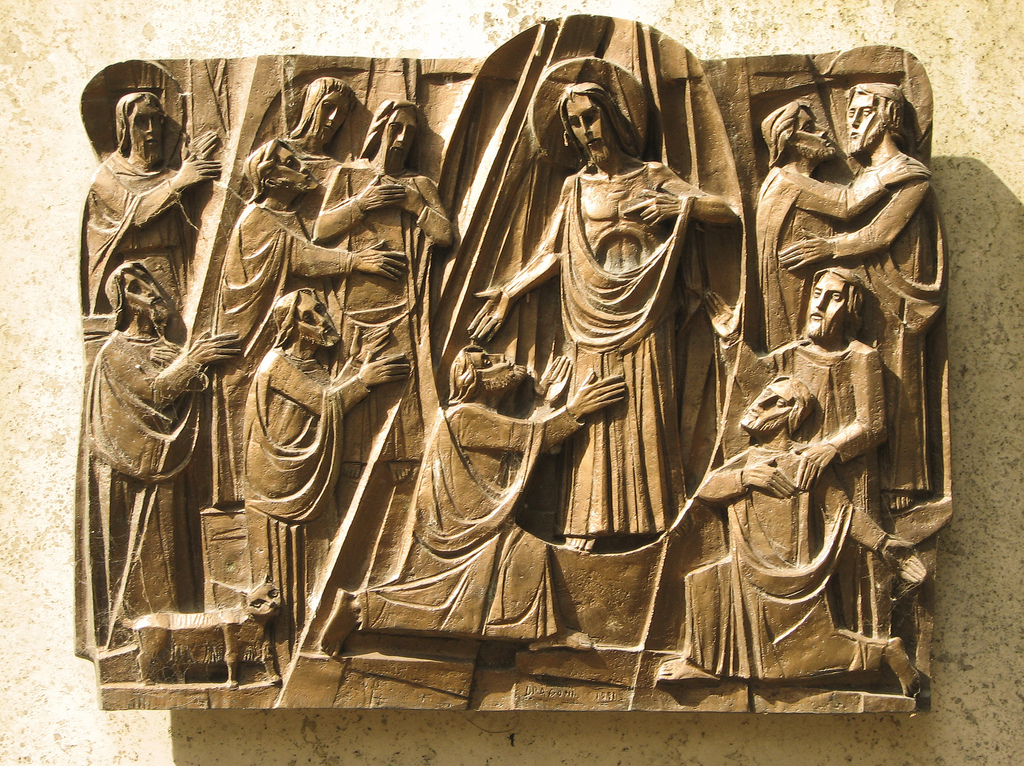What is it that we need to see to believe? To believe that death has indeed been overcome? To believe the promises of the resurrection here and now? To believe that the Kingdom of God is truly present in our midst? Or, what is it that we can’t see, refuse to see, because somehow we think that validation of the resurrection is something we should expect or that we can mandate?
To be clear, Thomas didn’t ask for proof. To see in order to believe is not the equivalent of requesting evidence or demanding a corroborating sign to ease our doubt. Because what is also clear? Thomas didn’t doubt. Never has been and never will be in the text, so let’s free our friend from this nomenclature and take a good look at ourselves for once. Thomas should not be a pawn for our own qualms. Thomas should not be the straw man for sermons that talk about faith’s misgivings. Thomas should not be a moral lesson so as to overcome our own uncertainties.
Thomas simply wanted, simply needed what Mary received, what the disciples received, which led all of them to utter the same confession, “I have seen the Lord.” Thomas was looking for his own encounter with the risen Jesus, not to prove that Jesus was alive once again, but to believe once again that the promise of relationship with Jesus would never be taken away, not even by those who take away life as if they hold life in their hands.
Thomas helps us see that manifestations of resurrection are a necessary part of a post-resurrection existence. Thomas helps us see that looking for resurrection in our lives is not the same as demanding a sign of its attestation. Thomas helps us see that any appeal for the verification of an empty tomb is an equation that is too easy, rather lazy, and chooses to overlook the obvious.
The resurrection is among us, whether we see it or not. The resurrection is all around us, whether we recognize it or not. The resurrection is in the midst of us whether we are able to point to it or not. When we are obsessed with confirmation of certainty or adequate corroboration for that which should not be believed, we miss the truth entirely – “the truth” that never was something to be believed but someone that makes believing possible.
Someone who redefines believing as relationship. Someone who recreates community in and by relationship. Someone who reimagines our lives as nothing other than a relationship with God. Someone who was raised from the dead so that we might have life and have it abundantly.
When we “see” resurrection as relationship, then the vision of Acts comes into full view and actually seems possible: “Now the whole group of those who believed were of one heart and soul, and no one claimed private ownership of any possessions, but everything they owned was held in common. With great power the apostles gave their testimony to the resurrection of the Lord Jesus, and great grace was upon them all. There was not a needy person among them, for as many as owned lands or houses sold them and brought the proceeds of what was sold. They laid it at the apostles’ feet, and it was distributed to each as any had need” (Acts 4:32-35).
When we “see” resurrection as relationship, we know how very good and pleasant it is when kindred live together in unity (Psalm 133) and we cannot but strive for fellowship with one another (1 John 1:7).
When we “see” resurrection as relationship, we live as if it is the litmus test of our lives, “Christianity is a lifestyle — a way of being in the world that is simple, non-violent, shared, and loving. However, we made it into an ‘established’ religion (and all that goes with that) and avoided the lifestyle change itself. One could be warlike, greedy, racist, selfish, and vain in most of Christian history, and still believe that Jesus is one’s ‘personal Lord and Savior’…The world has no time for such silliness anymore. The suffering on Earth is too great”1
Resurrection itself has become an establishment of the church, a belief that has yet to grasp hold of our world in such a way that silliness will no longer be tolerated. Blessed are those who do not see and yet believe are those who understand how easily the resurrection is taken for granted, overlooked, and even forgotten once the empty tomb is discovered. What will we help the world to see? Will the world be able to see the resurrection in us — in all that we do, in all that we say? If so, then seeing really will be believing.
Karoline
Notes:
- Richard Rohr, Meditation 37, Feb. 3, 2013.

